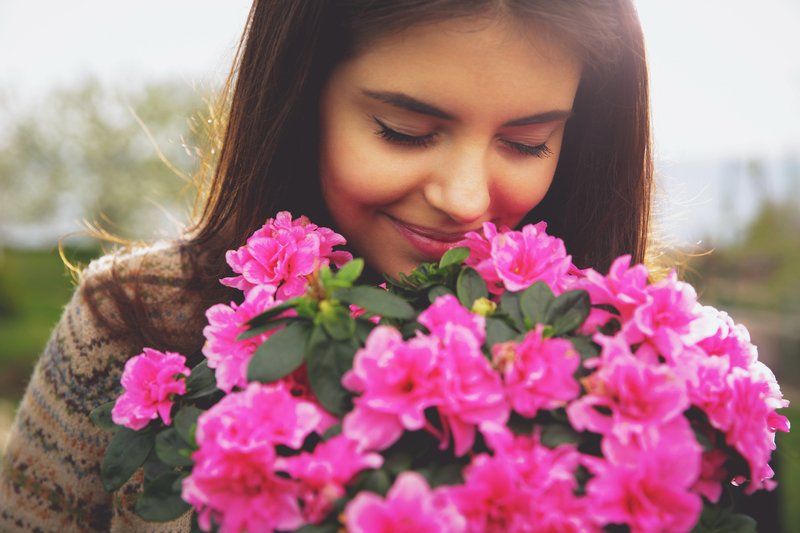Discover the Emotional Benefits of Surrounding Yourself with Flowers
Posted on 18/08/2025
Discover the Emotional Benefits of Surrounding Yourself with Flowers
Flowers have captivated human beings for centuries, not only thanks to their remarkable beauty but also because of the profound impact they have on our emotions and well-being. Whether you are arranging fresh bouquets for your home, strolling through a garden, or simply admiring colorful blooms, the presence of flowers can transform your mood and environment in incredible ways. In this comprehensive article, we will unpack the emotional benefits of surrounding yourself with flowers, offering research-backed insights and practical tips for enhancing your daily life with nature's artistry.
Why Flowers Have Such a Powerful Emotional Impact
It's no secret that flowers are tied to some of life's most meaningful events--weddings, celebrations, expressions of sympathy, and special milestones. But what exactly is it about being surrounded by flowers that brings such joy and comfort?
- Visual Beauty: The natural symmetry, vibrant colors, and delicate details of flowers immediately captivate the senses, offering a feast for the eyes that uplifts the spirit.
- Fragrance: Many flowers emit pleasant scents that trigger positive memories and emotions, acting as natural mood enhancers.
- Symbolism: Different flowers carry unique symbolic meanings, often representing love, hope, renewal, or friendship, providing an added emotional layer to their presence.
Let's explore how these qualities translate into tangible emotional benefits when you surround yourself with flowers in daily life.

The Science Behind Flowers and Emotional Well-being
Research in psychology and neuroscience has revealed compelling links between flowers and emotional health. According to a study by Rutgers University, the presence of flowers leads to immediate and long-term positive effects on emotional states. Participants reported feeling less anxious, more compassionate, and noticeably happier when exposed to fresh flowers in their environment.
Key Findings:
- Reduction in Stress: Simply viewing or tending to flowers can lower the stress hormone cortisol and induce relaxation.
- Enhanced Mood: The appearance of flowers has been shown to trigger smiles, reduce feelings of depression, and foster a sense of joy.
- Improved Cognitive Performance: Workspaces decorated with flowers or plants often experience increased creativity and focus among occupants.
These findings underscore the emotional benefits of being surrounded by flowers at home, in the office, or during moments of reflection.
Boost Your Mood Instantly with Floral Displays
Just as a piece of music can lift your spirits, so too can an artful arrangement of fresh blossoms. Here's how flowers positively influence your mood, even with brief exposure:
- Visual Stimulation: Bright colors and contrasting hues naturally stimulate the brain. Scientific studies have shown that yellow, pink, and purple flowers in particular are associated with increased feelings of cheerfulness and tranquility.
- Scent Therapy: Aromatic flowers like lavender, jasmine, and roses have been found to reduce anxiety and promote relaxation, making them perfect for bedrooms and resting spaces.
- Connection to Nature: Indoor flowers mimic the outdoors, helping to ease symptoms of loneliness and isolation--a crucial benefit for those living in urban areas.
How Flowers Can Foster Emotional Healing
Flowers play a pivotal role in emotional recovery and healing. This goes beyond mere aesthetics; the act of interacting with flowers--caring for them, arranging bouquets, or receiving them--can be therapeutic in challenging times.
Tangible Ways Flowers Aid Emotional Healing
- Comfort During Grief: Receiving flowers during times of loss provides comfort and symbolizes love, connection, and continuity.
- Support Through Transitions: Flowers are commonly used to celebrate beginnings, honor accomplishments, or mark new chapters, offering emotional grounding in times of change.
- Encouragement in Illness: Hospitals frequently include flower arrangements in patient rooms, not only to enhance the environment but also to accelerate recovery through emotional uplift.
Surrounding yourself with emotional healing flowers can therefore create a sanctuary of wellness in your personal space.
Strengthening Relationships Through Flowers
Few gestures are as universally appreciated as gifting or receiving flowers. Whether for a romantic partner, family member, friend, or colleague, sharing flowers fosters emotional connections and deepens relationships in remarkable ways.
The Language of Flowers: Communication Beyond Words
For centuries, flowers have been deployed as a delicate language of their own:
- Roses: Symbolize love, admiration, and gratitude.
- Lilies: Represent purity and renewal, making them ideal for new beginnings or offering condolences.
- Sunflowers: Signify adoration, loyalty, and positivity.
This ancient practice, known as floriography, allows you to communicate complex emotions in nuanced, memorable ways, strengthening bonds with those around you. Surrounding yourself with relationship-enhancing flowers can create an inviting, warm atmosphere for both visitors and residents alike.
The Emotional Benefits of Flowers in Everyday Spaces
You don't have to wait for a special occasion or a major life event to delight in the positive effects of flowers. Incorporating blooms into your daily surroundings is a simple but impactful way to infuse tranquility and happiness into everyday life.
Home
- Entryways and Living Rooms: Place bouquets near the entrance for an instant welcoming effect that sets a positive tone for your home's energy.
- Kitchens and Dining Areas: Fresh flowers at the center of the dining table bring vibrancy and warmth, creating a cheerful gathering spot for family and friends.
- Bedrooms and Retreats: Softly colored flowers like peonies or white lilies can induce calmness and aid relaxation, encouraging restful sleep.
Workspaces
- Desks and Offices: Small arrangements or potted blooms on your desk have been shown to boost productivity, reduce stress, and sharpen concentration.
- Meeting Spaces: A display of flowers softens the atmosphere, promoting collaboration and positive communication among team members.
Public Spaces
- Cafes and Restaurants: Flowers on tables enhance the ambiance, making guests feel valued and more relaxed.
- Hospitals and Clinics: Waiting rooms with floral arrangements report higher patient satisfaction and lower perceived wait times.
Easy Ways to Surround Yourself with Flowers Every Day
Incorporating flowers into your routine need not require extensive effort or expense. Here are some simple, creative ways to enjoy the emotional benefits of flowers regularly:
- Buy Local: Support local growers by purchasing seasonal flowers at farmers' markets, which also ensures fresher, longer-lasting blooms.
- Grow Your Own: Even small spaces can accommodate window boxes or potted flowers, allowing you to nurture plants from seed to bloom.
- Mix and Match: Combine different flower species and colors for personalized bouquets that reflect your personality and mood.
- Sign Up for Floral Subscriptions: Many services offer weekly or monthly floral deliveries, so your space is always graced with fresh, uplifting flowers.
- Experiment with Dried Flowers: Dried arrangements can be just as beautiful as fresh and add a rustic, long-lasting charm to your decor.
Seasonal Flower Arrangements to Uplift Your Emotions
Each season brings its own unique palette of flowers, offering the opportunity to refresh your environment and emotions year-round:
- Spring: Tulips, daffodils, and hyacinths bring a sense of renewal and hope after winter's dormancy.
- Summer: Sunflowers, peonies, and zinnias embody energy and vibrancy, ideal for lively, happy spaces.
- Autumn: Chrysanthemums, marigolds, and asters offer rich, warm colors that provide comfort and a sense of abundance.
- Winter: Poinsettias, amaryllis, and evergreens bring cheer and freshness to the colder months.
By staying attuned to the seasonal rhythms of nature, you can continually enhance your mood and environment with emotional flower arrangements.

The Psychological Principles Behind Flower Therapy
The emotional benefits of floral surroundings are rooted in several core psychological principles:
- Biophilia Hypothesis: Humans are innately drawn to nature and living things, which explains the restorative effects of flowers on mood and mental function.
- Color Psychology: Different flower colors evoke distinct emotional states--from soothing blues and violets to energizing reds and oranges.
- Sensory Integration: The combination of visuals, scent, and even touch stimulates multiple senses, creating holistic well-being.
Flower therapy is increasingly used by psychologists and wellness experts to help clients manage stress, grief, and other emotional challenges in a gentle and effective manner.
Conclusion: Embrace the Emotional Benefits of Flowers in Your Life
Surrounding yourself with flowers is far more than an aesthetic choice--it's a practical, accessible way to support your emotional health, enhance your environment, and deepen your connections to others. Whether you place a single blossom on your desk, tend a garden, or give flowers to a loved one, you're participating in a timeless tradition that celebrates beauty, joy, and healing.
Experience the emotional uplift that flowers can provide and watch how your mood, relationships, and daily experiences transform for the better. Start small, experiment with arrangements, and make flowers a cherished part of your self-care and well-being journey.
Latest Posts
Discover the Emotional Benefits of Surrounding Yourself with Flowers
Nurturing Your Hydrangeas to Flourish
Exploring the Tradition of Giving Red Roses on Valentine's Day
Discover the Flower That Reflects Your Unique Personality
Discover the 5 must-gift flowers for a charming Valentine's Day





